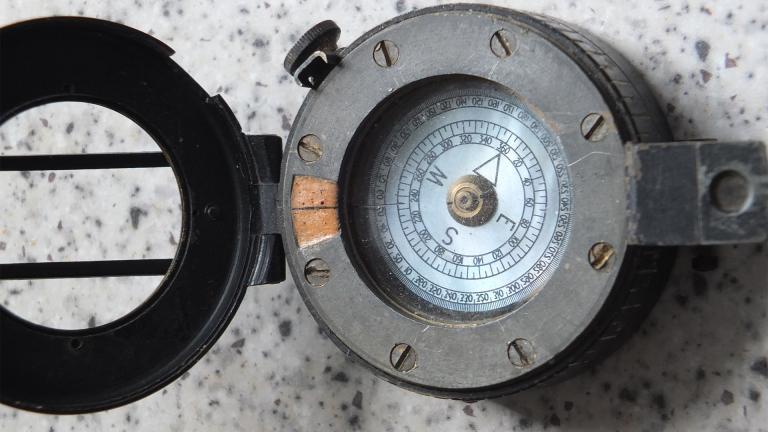
Read more about WW2

World War II was a time of strife and suffering for millions of people. However it was also a time of bravery, with many clinging to any scraps of hope they could muster. Prisoners of war and resistance fighters needed as much as hope as they could possibly get. This is where escape tools came in, as they offered a glimmer of hope to those who needed it most.
In one episode of the upcoming Battle Treasures with Foxy and Bruce, hosts Jason Fox and Bruce Crompton at the secret tools and gadget that gave captured soldiers a fighting chance at freedom.
Join us at Sky HISTORY as we dive further into the various escape tools used during World War II, including how they came to be and what the most common tools were.
Escape tools became prominent in December 1939 thanks to MI9, a new military intelligence branch of the British government. MI9 was established to train servicemen in the event that they became prisoners of war in France, Belgium or Holland. This training revolved around how to escape initially, but also how to avoid being recaptured.
In order to help with any escape attempts, MI9 developed and secretly sent out escape tools for prisoners to use. This was done via the top secret ‘Escape and Evade’ programme.
At the camps themselves, there were often groups of war prisoners who formed a committee where escape plans were organised. This was a coordinated effort where prisoners came together and used their skills to formulate plots and utilise tools. For instance, those who were skilled in sewing or other crafts would alter uniforms or produce escape equipment, such as fake work permits or ID cards.
MI9 also organised potential escape routes so that those who managed to make it out of the camps could travel in occupied countries as safely as possible.
Now that we know why they were created, let's have a look at some particularly fascinating creative tools .
Compasses were a vital part of escape plans in World War II. Escaping a camp was one hurdle to cross, but navigating the unforgiving occupied terrain afterwards was another challenge altogether. Compasses were necessary to help escapees find their way and avoid being captured again. Because of this, compasses were an absolute necessity.
Compasses were cleverly built into a range of items, with a particular common tool being the button compass. These tools were military brass buttons that contained miniature escape compasses hidden inside. These compasses were very simple, usually with a single needle made from cotton. This made it easy to hide them within buttons, but they could also be hidden inside other items such as cigarettes, pencils or collar studs.
Much like compasses, maps were necessary for escapees to avoid recapture. Maps were hidden inside a range of everyday objects so that they would not be detected. One clever way that maps were hidden was by printing them on silk. This was common for airmen, as the thin silk could easily be put inside flight equipment. Silk was the perfect material, as it was waterproof, quiet and could be folded with ease. Some other popular materials for small maps were tissue paper and rayon, but silk remained the optimal choice.
Maps could also be hidden inside items such as hair brushes and shaving kits. For hair brushes, a specific brush was designed that included a hollowed out back. This allowed for space for a large map as well as a compass and a double edged saw. The joint of the brush opening could be cleverly hidden by dandruff. Shaving kits were also modified to hold mini escape tools.
Around 40,000 maps were hidden in plain sight during World War II. Some were sewn into the lining of clothes, while others were disguised as normal items. They were carried by around 17,000 escapees from the Allied side during the war.
Hidden radios were more common for spies rather than escapees. They would be used to coordinate efforts with the resistance or gather valuable intel. To effectively communicate discreetly, resistance radios were built into miniature suitcases. These suitcases were able to adapt to a range of power sources, but they were also compact, making them incredibly versatile. These hidden radios were sent behind enemy lines via parachutes, kept safe within airtight containers.
These are just a few of the escape tools used in World War II. Some other gadgets included invisible ink matches, Monopoly game boards and domino sets with concealed maps. The incredibly intelligent designs of these tools not only show ingenuity, but also act as a symbol of perseverance and strength during a hellish time for humanity.
Want to stay up to date on all our content? Then subscribe to the Sky HISTORY newsletter! By doing so, you’ll receive exclusive access to the latest interviews, videos and articles